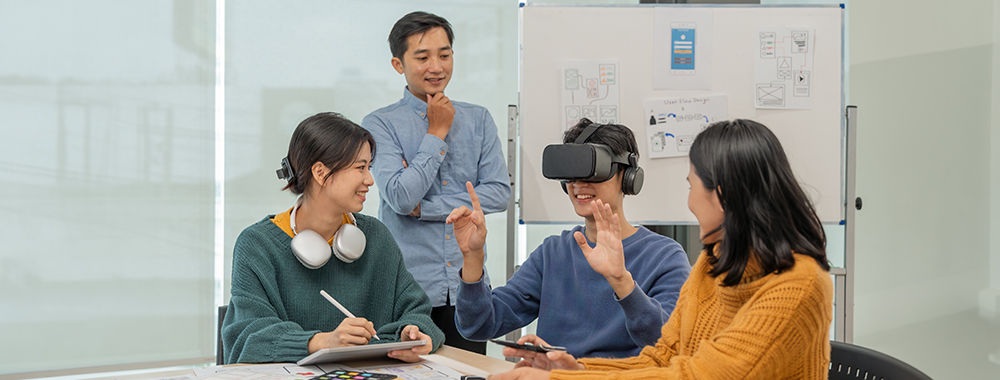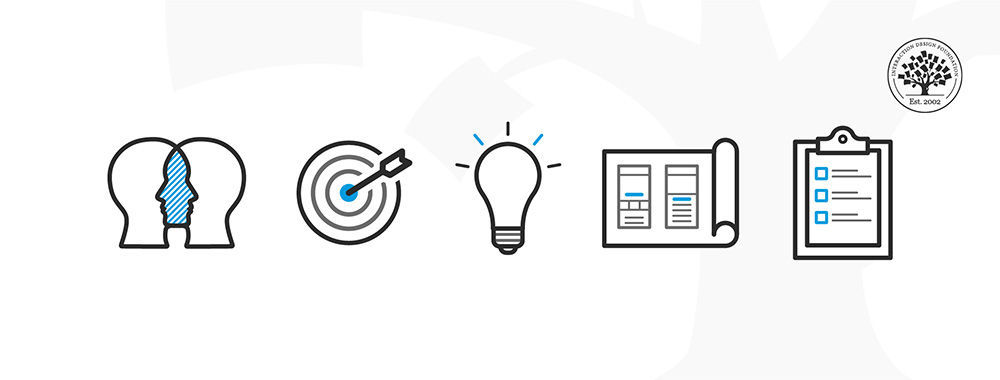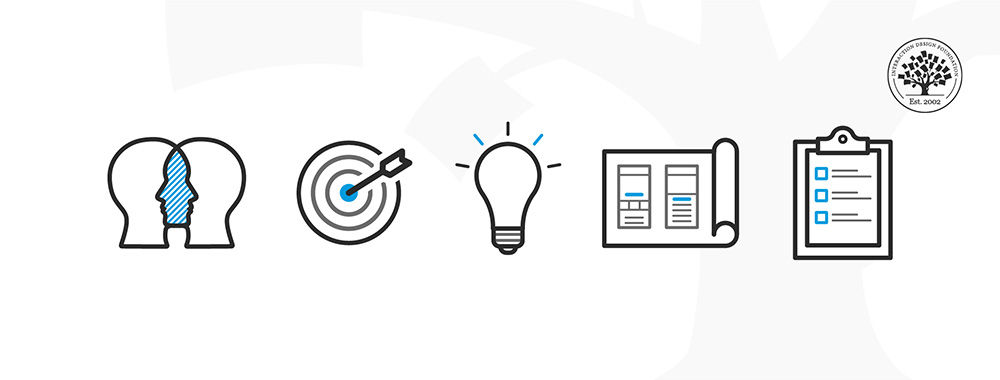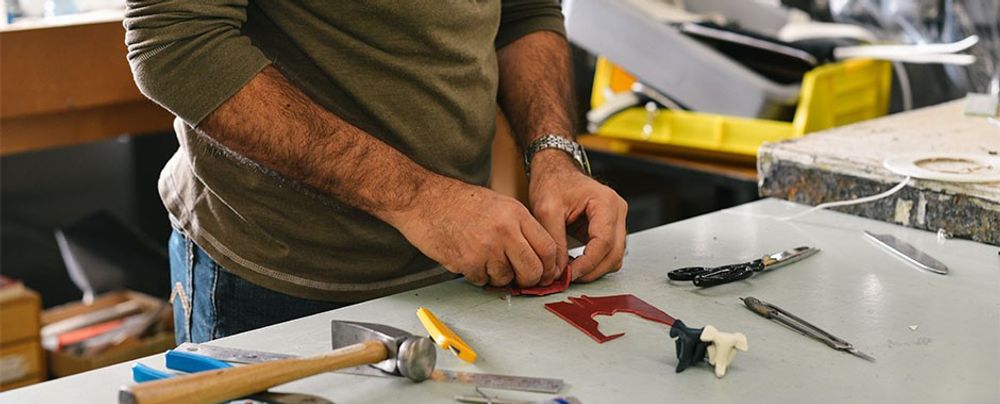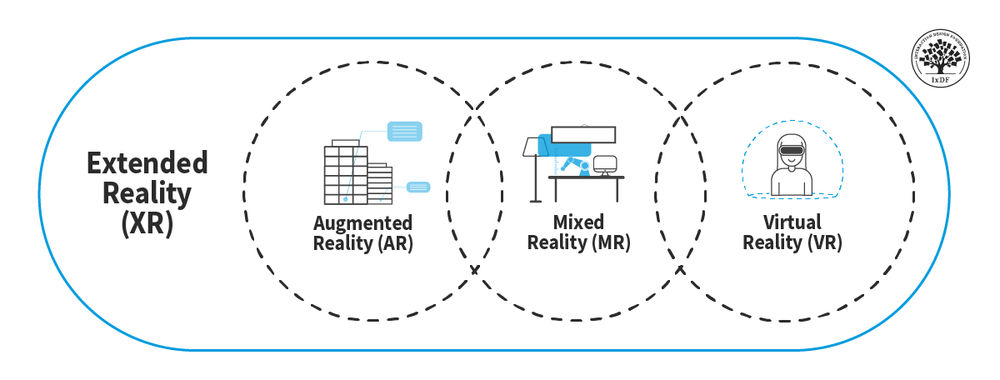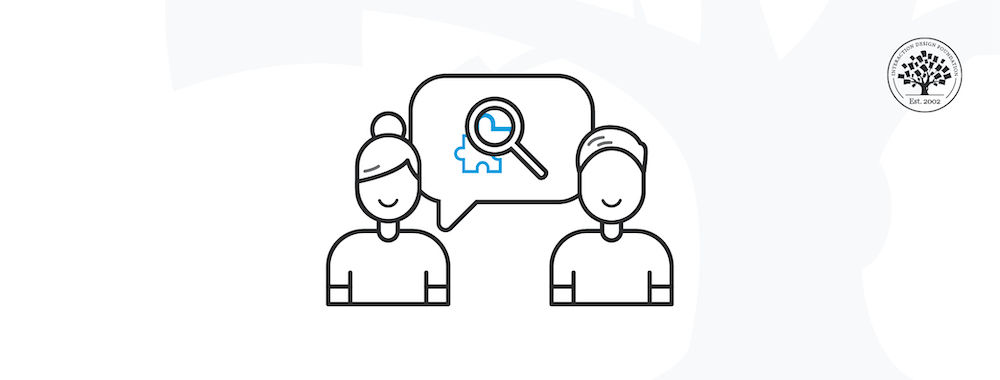The principles you use in a user experience (UX) design process carry over into the sphere of virtual reality (VR) and all the richness 3D experiences can afford, and what unlocks the true potential your VR experience has is that “magic” element of user research. That’s why, dear designer of great VR experiences, you’ll discover valuable points about the two vital components of user research, and they’re user needs analysis and testing.
In this video, CEO of Experience Dynamics and UX consultant, Frank Spillers talks about user research in the context of virtual reality.
Show
Hide
video transcript
- Transcript loading…
As Frank says, user research is critical for any UX project to do well, so you’ll need a deep understanding of your users—and that includes getting an empathetic feel for what their requirements are—if you’re going to create impactful, immersive VR experiences that end up resonating with your target audience at a level that spells true success.
To get a feel for why user research is so important in VR design, it’s a good idea to take “feel” as the operative word there—not least since your users will be the ones who’ll have to experience what you send them into in your VR experience, and feelings are going to come into it, especially if things go wrong. From there, you’ll get to see why the user research techniques that are coming up in this piece are so helpful at different stages of the VR design process, and how you can conduct user research that brings off the best results.
Why is User Research Important in VR?
“Important” might be an understatement—so let’s call it vital instead, and you need your UX research to go well when you’re working in VR design because as a medium VR is still quite new and—another big factor for this—it’s still evolving, and will continue to. So, if you’re going to design solutions that meet the user needs the people you want to design for have, you’ll need to identify user needs, user preferences, and—to smooth out the kinks even before they happen—user pain points and get them all just right for the individuals who enter your VR design.
Think about it for a moment—as fun as VR can be, the fact is that you’re asking a lot of users when you invite them into a world you create. They’re not just taking the time to check out a design you’re offering them; they’re having to enter a VR world that’s all but hermetically sealed off from their surroundings, so it had better be good—you only get one chance to make a first impression, after all. VR can elicit strong emotional responses from its users—things like disorientation, motion sickness, discomfort, and other negative reactions—perhaps even fear if the situation is such. That’s where user research comes in to weed out and identify potential issues—and real issues that human users may experience—so you can work out how to mitigate them—if not eliminate them—and improve the overall user experience.
What Are the Best User Research Methods for VR?
User Needs Analysis
Analyze user needs and you’ll get a clear picture—and much deeper understanding—of the requirements, preferences, and challenges that your target users have, and it’s here where you’ll get in and analyze information about the specific needs, goals, and expectations which the individuals who are going to use your virtual experience have in reality. This analysis of your users’ needs should give you valuable insights into what your users are after in a VR experience and what problems they want to—or need to—solve. Because it’s so vital a thing to get right so you can get off on the right track and get the best thing built, this analysis should happen nice and early in the design process—so what you create should have valid research on how to meet user needs on which to stand as its foundation, and here are some research methods for that.
User interviews: This is where you conduct one-on-one interviews with potential users who might use your VR experience, and it’s a great way to climb into their worlds and start building up empathy. How you get there is to ask open-ended questions—as opposed to “yes/no”-answered ones—and it’ll give you the user insights you’ll need to understand their goals, expectations, preferences, and pain points. We can split these into two buckets: questions that are related to VR in general and ones that are more about the kind of experience you want to create. User interviews can furnish you with rich qualitative data and help you uncover insights that will determine how you design your product, and—again—the earlier you know things from your users, the better you can use what you know from them.
Observational studies: As in, observe users as they interact with existing VR experiences or prototypes and pay close attention to their behavior, gestures, and reactions. Know the expression “a picture is worth a thousand words”? Well, this method can show you plenty of sights where users’ facial expressions, words, and movements can give much of the game away. It’s not just about letting you understand how users naturally navigate and interact with virtual environments—if you catch them grimacing, going “Huh?!” or flailing their arms in shock, for example, you’ll almost certainly be able to identify usability issues or areas for improvement.
Surveys and questionnaires: Quantitative data is valuable as well, so get in some valuable quant data through surveys or questionnaires from a larger sample of users. And these are methods that can help you gather demographic information, preferences, and opinions on specific aspects of the VR experience—namely, the measurable “whats” (where qualitative is more the “whys” behind things). Once you get those survey results analyzed well, you can get some great insights into user preferences and use them to guide design decisions with.
Card sorting: Card sorting techniques are a superb way that can help you to understand how users organize and categorize content within the VR experience, and card sort sessions help you find patterns in users’ mental models—insights you might otherwise miss and so you can use these for the information architecture and navigation design of your VR experience.
User feedback / Testing / Usability testing: It’s essential to do iterative testing throughout the design process and obtain user feedback from early on, and while testing generally occurs once there’s something to test, it can be very, very beneficial to test basic prototypes or mockups of your VR experience. So, get users to perform specific tasks while you observe what they do—their interactions can speak volumes, and usability tests and feedback on prototypes will help you spot usability issues, validate design decisions, and refine the VR experience based on user input.
If you can, it’s best to not just use one but combine multiple methods so you cover any gaps and get more reliable and comprehensive results. To be sure, each method has got its strengths, so that’s where—and why—you’ve got to consider what your research objectives are, the resources available to you, and the characteristics of your target audience—as far as you can pinpoint them—when you’re picking the methods most appropriate for your VR design project.
Testing
Though testing tends to happen later on in the design process, once you’ve created prototypes or mockups to test, you’d do well to get some testing done early on—as we discussed earlier—and it’s good to be aware of the entire process even if you’re just starting out with your design, not least since you might spot some aspect you can check on, earlier on.
Regular testing, in any case, means that you can shape your creative efforts towards a user-centered and immersive design that your target audience can take to—and it’s vital to break this into “buckets” where you’ll evaluate the usability, functionality, and overall user experience of the virtual environment you’re developing. It’s through user testing that you’ll learn—hopefully in fine detail—how users interact with the VR interface, navigate through the virtual space, and perform tasks.
Testing can take several forms, and we’ll go into a few here. You can do usability testing, for instance, where you’ll get to gauge just how usable your design—as in, a prototype—is as your test participants do—and complete—specific tasks, navigate the virtual environment, interact with objects, and with the results work out what usability issues and other problems are. From these, you’ll have the insights with which to optimize the interaction design, intuitive controls, user interface (UI) elements, and other aspects of the virtual experience—including the experience overall and in itself.
Cognitive walkthroughs can be a revealing way to assess important factors like the learnability of your VR experience and how effective it is. For these, you get to step through the user journey and imagine how users—with varying levels of experience and familiarity—would perceive things in there and interact with the environment. It’s a handy way to spot potential points of confusion or cognitive overload—because, face it, you’re sending them into another world!—so you can get the pointers you need to refine the design as you go.
Then we’ve got A/B testing, which is as intuitive as it sounds: you take design “A” and design “B,” and each one has different variations of your VR experience—or you can go for more, with a “C” and a “D,” too, for example. In any case, you put these before your test users and see how they react—and interact with—the distinct design elements, then collect user feedback and performance data. A neat aspect to A/B tests is how they let you enjoy an objective evaluation of design choices to see which ones users find more effective and prefer to others.
Eye-tracking is another way to get in data that can give you good ideas as to what’s what with your design and how users experience it, and eye-tracking technology can show you users’ visual attention and gaze patterns inside the VR environment. From that, you can get helpful insights from which you can work out why certain elements of areas attract the most attention and it’ll show you whether users are noticing things like important visual cues and other information. And from all that data you get from eye-tracking studies, you can find out how to better place critical elements within the experience and ramp up the visibility factor.
Last—but not least—are post-experience surveys, and it needn’t be over when it’s over when you can catch users after they’ve come out of the VR experience and administer surveys or questionnaires to them. So, go ahead and ask them about their overall satisfaction levels, for specific feedback about different aspects of what you put them into—and hopefully not put them through!—and suggestions for improvement. As long as they’re candid with you—because some people don’t like to think they’re being impolite by saying there’s something wrong—you can end up with valuable insights into these users’ perceptions, emotions, and overall impressions of the VR experience long before you might sink time and effort into making something the target audience won’t like as much as you’d hoped.
The Take Away
As it is with UX design in general, user research is also a key component of VR design and it’s a powerful force and source of guidance that enables you to create impactful experiences that meet user needs. It’s therefore important for you to conduct user needs analysis from an early stage, so you get to understand the requirements and challenges of your target users and guide your design using the insights from this data like a rudder. Use techniques such as user interviews, observational studies, and surveys and you’ll find they provide valuable insights into user preferences and what they’re really after in a VR design.
What’s more, get deep into usability testing and you can evaluate the usability and overall user experience of your VR experience so you iron out kinks, boost how well users take to your piece, and get to breathe easier knowing you’re on the right track. To bolster that, you’ve got other testing methods to choose from—and add to it—like A/B testing and eye-tracking, and they can help you identify areas for improvement and refine your design so that what ultimately emerges in the market place is much more likely to be a hit.
References and Where to Learn More
Learn more about card sorting in our piece, “Card Sorting: How To Get Started” or better yet, watch our Master Class on it.
Check out The Nielsen Norman Group’s observer guidelines for usability research.
UXStudio’s blog, “VR In UX Research: All You Need To Know About VR User Testing” provides some best practices for this activity.
Read this Medium article, “A fundamental guide to user testing in Virtual Reality”.
Read a usability test tutorial for VR.
